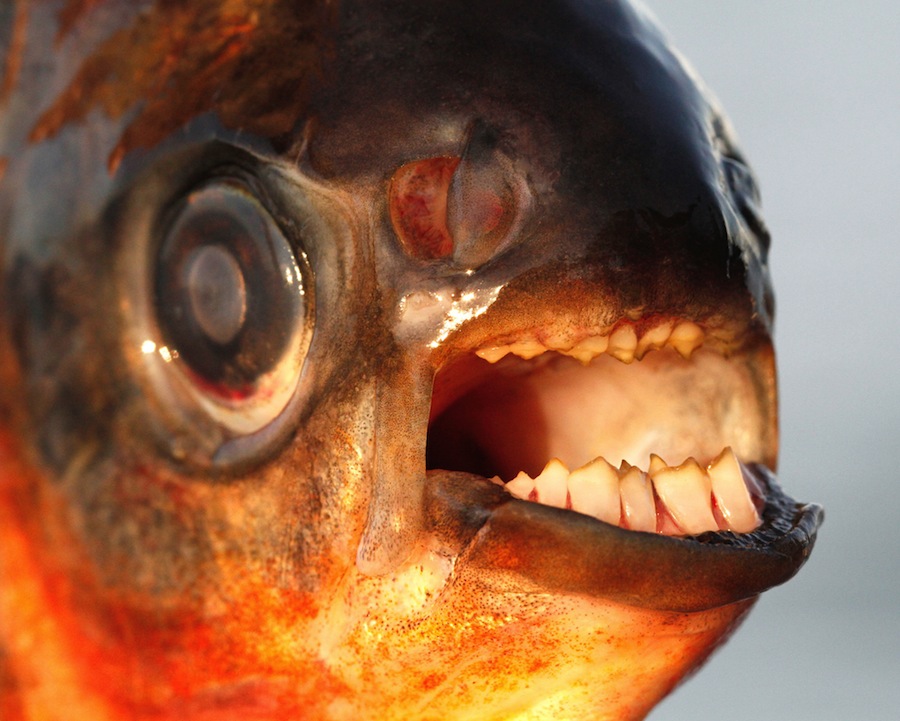Testicle-Biting Fish May Be Invading Denmark

Danish skinny-dippers beware: A piranha cousin rumored to go after testicles might be invading brackish waters near Copenhagen.
On Aug. 4, local fisherman Einar Lindgreen was going through his catch after fishing in the Oresund, the strait between Denmark and Sweden. Besides the eels and perch, Lindgreen also netted an exotic fish suspected to be a red-bellied pacu, which is native to the Amazon and has uncannily human-looking teeth.
"It's the first time this species has been caught in the wild in Scandinavia," fish expert Peter Rask Møller of the University of Copenhagen said in a statement. "Discovering whether this fish is a lone wanderer or a new invasive species will be very exciting. And a bit scary." [Photos: The Freakiest-Looking Fish]
The toothy South American fish has crept into lakes and rivers far outside its native range, likely after getting loose from aquariums and fish farms. Though its teeth are used mainly to crush nuts and fruits, the pacu eats other fish and invertebrates and there have been some reports of human attacks. In Papua New Guinea, the invasive species has reportedly earned a reputation as the "ball-cutter" after castrating a couple of local fishermen.

The specimen snagged by Lindgreen measured just less than 8 inches (20 cenitmenters) long but the pacu can grow much larger. Some can even weigh as much as 55 pounds (25 kg), according to the University of Copenhagen.
According to Møller, amateur aquarium owners and fish farmers are the "usual suspects" when an exotic fish like the pacu ends up on the loose.
"It is not unlikely that someone has emptied their fish tank into a nearby stream just before a vacation and that the pacu then swam out into the brackish waters of Oresund," Møller explained in a statement. "We don't know of any commercial farming of pacus in Europe. But just like the piranhas the pacus are quite easy for amateurs to raise."
Get the world’s most fascinating discoveries delivered straight to your inbox.
Researchers still have to confirm the identity of the fish though genetic testing, since there are several species of pacu that look similar when young and hybrid species produced in the aquaculture business.
But for now the University of Copenhagen had some cautionary advice for the public: "Anyone choosing to bathe in the Oresund these days had best keep their swimsuits well tied."
Follow Megan Gannon on Twitter and Google+. Follow us @livescience, Facebook & Google+. Original article on LiveScience.com

